Private Equity Investing: Improving Operations to Create Value
The ability to create value independent of market factors is critical in an uncertain environment.
Introduction
In the decade leading up to 2022, the rising tide of booming markets lifted virtually all boats—including the private equity industry. But now that volatility has returned to markets, strong returns might not come as easily to many general partners (GPs).
That’s because the private equity industry has largely relied on market factors for value creation. But with the protracted era of rallying markets behind us, GPs can no longer count on multiple expansion to drive returns.
This trend sheds light on our third and final step to private equity investing: creating value through operational improvements. After identifying high-quality businesses and acquiring them for value, improving their operations is critical to enhancing cash flows. Here, we demonstrate how improving the operations of portfolio businesses can drive the majority of private equity value creation—and how it’s best approached with an established, repeatable playbook.
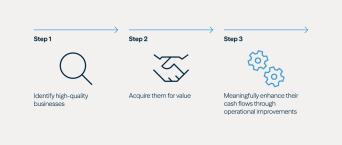
The Perils of Relying on Market Factors for Performance
The broad global market expansion during the most recent cycle has helped drive increasing multiples in private equity (see Figure 1).
A closer look at the drivers of private equity value creation reveals that the concurrent strong performance is no coincidence. Private equity returns for the period were driven primarily by multiple expansion, particularly in recent years (see Figure 2).
Figure 1: Global Buyout Entry Multiples Have Increased Over the Last Decade
Median Buyout Entry Multiples, Turns of EBITDA
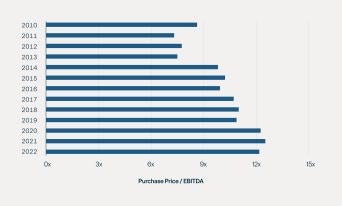
Source: McKinsey.
Figure 2: PE Industry Value Creation Has Primarily Been Driven by Multiple Expansion
Median Index Value Creation (Global Buyouts, Deal Entry Years 2012–22)
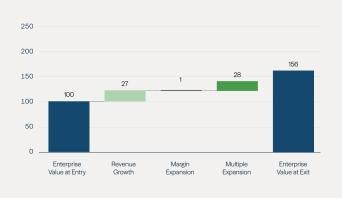
Note: All calculations in U.S. dollars; deal universe includes buyout deals globally; all deal sizes; deal entry years 2012-22; fully realized and partially realized deals. Source: Bain.
While surging public markets were a tailwind for private equity returns, the tides have since turned. The post-GFC bull market ended abruptly in 2022, and volatility has extended into 2023. As such, GPs can no longer rely on growing multiples and access to cheap leverage to drive value creation.
The good news for private equity investors is that multiple expansion doesn’t have to be the primary source of value creation. We believe operational improvements—not market factors—can account for the majority of value created within a private equity portfolio.
Creating Value by Focusing on Controllable Outcomes
Broadly, creating value through operational improvements is about providing leadership and direction as portfolio companies execute on their business plans. This generally involves some combination of strategic repositioning, operational excellence and enhanced commercial execution.
The process starts with identifying the operational changes that can drive the most value. This requires a focus on several core functional areas, with established special teams possessing domain knowledge in each area (see Figure 3).
Assessing and transforming an organization means thinking like an operator but evaluating like an investor—and having operational teams that are fully capable of stepping in and running portfolio companies. This can often mean taking a secondment as an interim step to establishing a strong long-term management team.
Figure 3: Core Functional Areas for Identifying Value Drivers
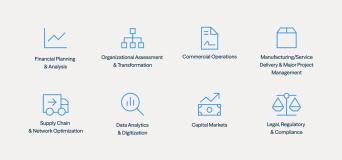
A ‘Rinse and Repeat’ Playbook
Improving business operations is best approached with a tried-and-true playbook. Following an established, repeatable process that focuses on core functional areas can effectively enhance portfolio company cash flows and drive value.
The process requires a holistic approach to developing a business strategy that incorporates both macro environment and internal considerations. The business plan can then inform strategic priorities and an operating plan can be built around them—ensuring that people, structure and processes evolve alongside the strategy (see Figure 4). An effective playbook for improving portfolio companies’ business operations should also involve several key activities (see Figure 5).
Figure 4: Our Guide to Value Creation
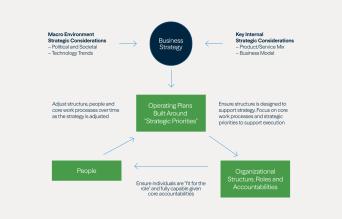
Figure 5: Investment Process Playbook
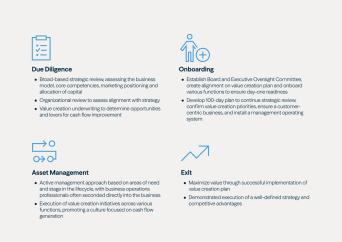
The Brookfield Playbook in Action: Creating Value at Westinghouse
Westinghouse is one of many examples where our playbook has delivered meaningful results when it comes to operational improvement value creation. Westinghouse is the leading provider of technology, fuel and services to the global nuclear reactor fleet. The company operates four main segments: operating plant services, nuclear fuel, energy systems and environmental services.
The playbook
As part of our due diligence process, we conducted a broad-based strategic review. After assessing the company’s organizational structure, we first installed an experienced management team to instill a culture of operational excellence and restructured the operating model to be customer centric and focused on cost to deliver.
Our strategic review also identified Westinghouse’s core competencies to inform value creation priorities. This enabled us to sharpen our focus on the products and services that generate the most profits—and exit the businesses that don’t. We consolidated the facility footprint and improved the nuclear fuel production process, increasing efficiency and optimizing the supply chain. We also renegotiated key supplier contracts, resulting in significant savings.
The growth initiatives
We determined that revamping the company’s commercial strategy to align the sales team and product innovation with identified market opportunities was essential to driving growth. We also expanded the geographic footprint and product offerings though M&A, integrating eight accretive add-on acquisitions.
The value creation
Following our established playbook, we improved operations at Westinghouse with measurable value creation results. Through a combination of targeted operational improvement and M&A, we enhanced the company’s EBITDA by over $350 million (see Figure 6).
Figure 6: Enhanced EBITDA by Over $350 Million
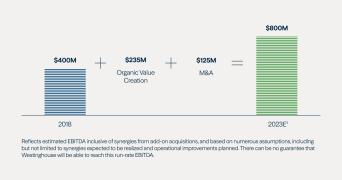
The Final Important Step
Driving operational improvements to enhance cash flows represents the third and final step in our private equity strategy. While the first two steps—targeting high quality businesses and acquiring them for value—are essential, this third step is what drives value creation within a portfolio, and it is all through levers that we control.
In today’s uncertain market environment, it's critical that GPs have the ability to create value independent of market factors. Improving portfolio company operations is a key driver of value creation—but it requires an established process with a track record of successful execution.
Disclosures:
This commentary and the information contained herein are for educational and informational purposes only and do not constitute, and should not be construed as, an offer to sell, or a solicitation of an offer to buy, any securities or related financial instruments. This commentary discusses broad market, industry or sector trends, or other general economic or market conditions. It is not intended to provide an overview of the terms applicable to any products sponsored by Brookfield Asset Management Ltd. and its affiliates (together, "Brookfield").
This commentary contains information and views as of the date indicated and such information and views are subject to change without notice. Certain of the information provided herein has been prepared based on Brookfield's internal research and certain information is based on various assumptions made by Brookfield, any of which may prove to be incorrect. Brookfield may have not verified (and disclaims any obligation to verify) the accuracy or completeness of any information included herein including information that has been provided by third parties and you cannot rely on Brookfield as having verified such information. The information provided herein reflects Brookfield's perspectives and beliefs.
Investors should consult with their advisors prior to making an investment in any fund or program, including a Brookfield-sponsored fund or program.

